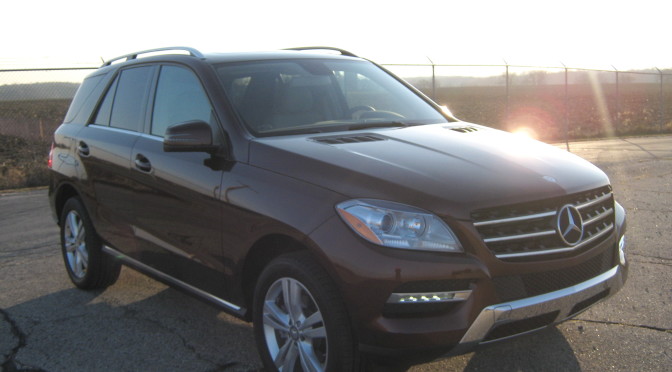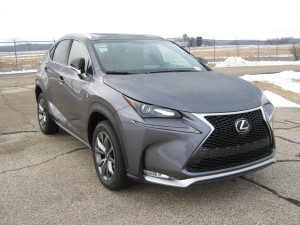This is the fourth part of a series of the vehicles you want to be in if you’re about to experience a rollover. The first part dealt with the best minivans for surviving a rollover last year, and the second and third parts dealt with the best 2016-model year family cars and small SUVs and crossovers for rollover survival. Today’s post will deal with the entire field of SUVs and crossovers, whether 2-row or 3-row. By the end of it, I want you to know what makes a safe SUV when it comes to avoiding or surviving a rollover, and which models fit the bill.
I’ve written a series of similar articles on safe vehicles for side impact collisions (here are the safest 2015 cars, small cars, minivans, and SUVs and crossovers for surviving side impacts). Now let’s take a look at which factors play a role in surviving a rollover in a given vehicle.
What does a family SUV or crossover need to keep my loved ones safe before or during a rollover?
1. Electronic stability control. ESC reduces rollover risks by acting like an advanced version of ABS; it can brake individual tires to help keep your vehicle headed in the same direction as your steering wheel. The NHTSA estimates it cuts the risks of a fatal single vehicle crash by a full 50%. This is technology you want on your side whenever you’re behind the wheel (much like the seat belt and frontal airbag).
2. Rollover-sensitive side airbags with head and torso coverage. Once you’ve got ESC, you’ll also want side airbags programmed to activate when a rollover is imminent. ESC doesn’t help you once a rollover is actually occurring, but side airbags that deploy to keep your head from banging against the windows, roof rail, or vehicle frames can help tremendously. Remember that you have no control over your body during a rollover, so it’s not a matter of “bracing yourself” before a crash.
3. A strong roof. Finally, a strong roof is essential for keeping your survival space intact during a rollover. If your SUV is flipping and your roof crushes when you’re upside down, you aren’t going to live to see the ambulance. Similarly, even if the roof doesn’t collapse into your head but simply buckles enough to detach your seat belt frame or put your airbags out of position, your odds of survival will drop rapidly. A strong roof can mean the difference between walking away from a rollover and being buried a week later.
How strong does an SUV’s roof need to be to keep from crushing in a rollover accident?
That’s a great question, and if you ask the NHTSA and IIHS, you’ll get two different answers. The NHTSA used to think that a roof only needed to support 1.5x the weight of a vehicle before crushing by several inches, and they also only felt this rule needed applying to vehicles weighing less than 6,000 pounds. The NHTSA’s guidelines didn’t go far enough; in a rollover involving a drop of just a few inches to the ground, a vehicle can easily put several times its own weight on its roof. This leads to the tragedies I’ve spent years writing about on this blog.
As a result, the IIHS came along and made up their own roof strength test and guidelines. They decided that a roof should be able to withstand at least 4.0 times its weight (known as the strength-to-weight ratio, or SWR), to be rated “good.”
Their threshold for an “acceptable” rating is 3.25x, while their threshold for a “marginal” rating is 2.5x. Below that, such as in the 1.5x range the NHTSA used to find acceptable, the IIHS marks a roof as poor.
Thanks to the IIHS, the NHTSA finally increased their SWR requirement to 3x the weight of the vehicle for vehicles under 6,000 pounds before the roof could cave in by several inches. They also created a requirement for vehicles between 6,000 and 10,000 pounds of 1.5x vehicle weight. Neither requirement is enough, but both are better than what the requirements used to be.
Given these factors, I put together a list of the best model 2016-17 2- and 3-row small, mid-sized, and large SUVs and crossovers to be inside when trying to avoid or survive rollovers. I weighed and combined the three metrics I described above for optimum rollover safety. To only consider the best of the best SUVs and crossovers, I limited the list below to vehicles with ESC, roofs with SWRs of 5.0 or greater, and roll-sensitive side airbags; I then sorted these vehicles by roof strength. Each SUV is identified as a 2016 “Top Safety Pick+” by the IIHS, which means they all feature good frontal, side, roof, and head restraint scores, as well as advanced or better frontal crash prevention with optional features. I used the TSP+ as another filter to ensure these vehicles were at the forefront of recommended technologies.
The safest family SUVs for avoiding and surviving rollovers in 2016
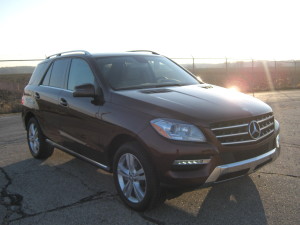 6.68: 2012-2015 Mercedes-Benz ML-Class, 2016 Mercedes-Benz GLE-Class
6.68: 2012-2015 Mercedes-Benz ML-Class, 2016 Mercedes-Benz GLE-Class
When it comes to roof strength throughout the small, mid-sized, and large SUV market, there isn’t a vehicle that’s tested better yet than the MB GLE-Class (and the final generation of the ML-Class, which is exactly the same vehicle). It’s capable of supporting more than 6.5x its own weight before caving in by 5 inches. This is by far and away the best option available today. The “peak force” tested value was equivalent to more than 31,000 lbs, or several thousand pounds beyond the weight of a class A RV or a full-sized school bus. This is a roof that won’t let you down, and it’s reflective of MB’s longstanding attention to safety. As an aside, the 2012-16 ML/GLE-Class is also among the leaders in side impact protection; this is a very impressive vehicle all around.
If you’re looking to save money, consider the ’12-’15 ML-Class, as it’s exactly the same vehicle under MB’s old naming scheme. Unfortunately, you can’t go prior to that generation and get all three safety factors I advocate for above, however, as the ’07-’11 ML-Class’s roof was never tested by the IIHS, although it does feature ESC and roll-sensitive side airbags. That said, it’s worth noting that the ’08-’11 ML-Class 4WD was estimated to have a driver death rate of 3 by the IIHS with none of those deaths occurring in rollover situations, which only reemphasizes the safety of the vehicle and its drivers across various generations.
My full 3 across car seat guide to the ML/GLE-Class is here.
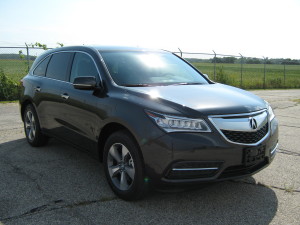 5.87: 2014-2016 Acura MDX
5.87: 2014-2016 Acura MDX
The MDX is one of Honda/Acura’s many appearances on this list, and is a testament to Honda’s safety record. The MDX clocks in with an SWR of 5.87, or close to 6x the weight of the SUV.
If you’re interested in saving money, the previous generation MDX would also be a good choice during the ’12-’13 model years, as it featured ESC, roll-sensitive side airbags, and a good SWR of 4.46. It’s worth noting that the ’08-’11 model years of that generation, which didn’t feature a roof score, were estimated to have a driver death rate of 12 in the 4WD MDX by the IIHS, with 2 of the 5 estimated single vehicle fatal crashes likely to occur due to rollovers. With that said, I’d still rate it as an extraordinarily safe vehicle to drive my family in.
My full 3 across car seat guide to the MDX is here.
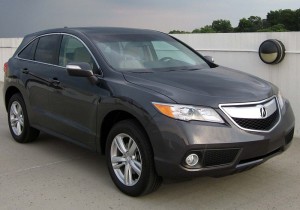 5.48: 2013-2016 Acura RDX
5.48: 2013-2016 Acura RDX
The RDX is the smaller sibling of the MDX, but it makes a strong showing with an SWR of 5.48. If you’re interested in saving money, the previous generation RDX (’07’-’11) does have ESC and roll-sensitive side airbags, but it only features a “marginal” roof score with a 2.90 SWR. That said, the IIHS still estimated the ’08-’11 years of that generation to have a driver death rate of 12 in the 4WD RDX, which was no higher than that of the MDX. Additionally, none of the deaths were estimated to occur from rollovers.
My full 3 across car seat guide to the RDX is here.
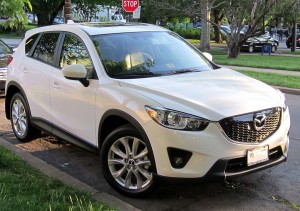 5.47: 2013-2016 Mazda CX-5
5.47: 2013-2016 Mazda CX-5
The CX-5 recently made an appearance as the leading small SUV / crossover available in the US for rollover prevention that had also been identified as a 2016 Top Safety Pick. It’s not the highest-ranking SUV on this list due to MB and Honda’s showings above, but it’s one of the all-around safest small SUVs you can buy right now.
Unlike most of the other vehicles on this list, there isn’t a previous-generation CX-5 to look through for savings; however, since the strengths in this model date back to model year 2013, you might be able to find significant savings in the used market.
My full 3 across car seat guide to the CX-5 is here.
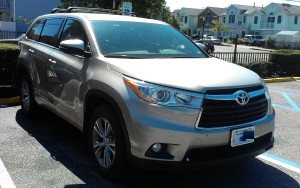 5.40: 2014-2016 Toyota Highlander
5.40: 2014-2016 Toyota Highlander
The Highlander is Toyota’s first entry in this list, and it’s a strong one, with an SWR of 5.40. If you’re interested in saving money, you’ll be happy to learn that the previous generation Highlander (’08-’13) comes with ESC, roll-sensitive side airbags, and a good roof SWR of 4.74, which is almost enough to give the Highlander two appearances on this list.
The IIHS estimated the ’08-’11 years of the hybrid 4WD, regular 2WD, and regular 4WD Highlanders to have driver death rates of 0, 7, and 14, respectively, which are three strong endorsements of the safety of the vehicle and its drivers. In the 2WD Highlander, 2 single vehicle crash fatalities were estimated to lead to rollover fatalities; there were no rollover fatality estimates for either 4WD model.
My full 3 across car seat guide to the Highlander is here.
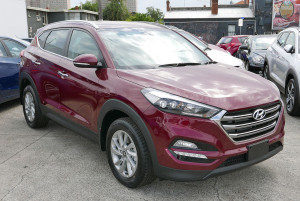 5.37: 2016 Hyundai Tucson
5.37: 2016 Hyundai Tucson
Another small SUV makes an appearance! Hot on the heels of the CX-5 is the Tucson with a strong SWR of 5.37. Unlike the CX-5, there aren’t any previous years in this generation yet, as this is the first model year of the current gen. To see any savings, you’ll need to go to the previous gen Tucson, which does still feature a good SWR of 4.43, ESC, and roll-sensitive side airbags.
My full 3 across car seat guide to the various generations of the Tucson is here.
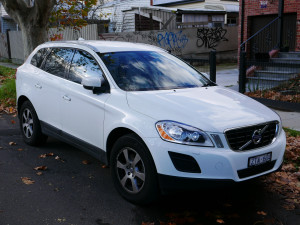 5.23: 2010-2016 Volvo XC60
5.23: 2010-2016 Volvo XC60
The XC60 marks one of Volvo’s two appearances on this list with a respectable SWR of 5.23. There isn’t a previous generation to look back to in order to save money with the XC60, but because the current generation dates back to 2010, you’ll likely be able to find significant savings in the used market.
My full 3 across car seat guide to the XC60 is here.
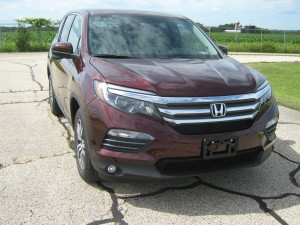 5.22: 2016 Honda Pilot
5.22: 2016 Honda Pilot
The Pilot is the non-luxury counterpart to the MDX, and shows that Honda puts attention into safety up and down their product lines. It features a good SWR of 5.22, although it isn’t quite as strong as that of its Toyota competitor, the Highlander.
If you’re interested in saving money, you’ll be happy to learn that part of the previous generation Pilot (’12-’15) features ESC, roll-sensitive side airbags, and a good SWR at 4.63. However, don’t go back too far in the generation, because the ’09-’11 years of the same gen featured a “marginal” roof SWR at 3.05. Interestingly, the IIHS estimated those very years (’09-’11) to have driver death rates of 2 and 11 in the 4WD and 2WD editions, respectively. It was further estimated that every fatality in the 2WD Pilot would be due to a rollover, which is somewhat unsettling, despite the overall great driver death rate. There were no estimated fatalities due to rollovers in the 4WD editions.
My full 3 across car seat guide to the Pilot is here.
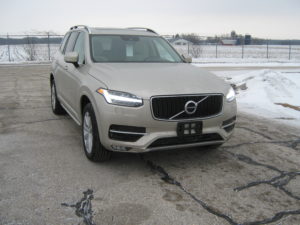 5.18: 2016 Volvo XC90
5.18: 2016 Volvo XC90
The XC90 is the second and final Volvo to make the list, and makes the cut with a good SWR of 5.18. Like the ML-Class, the XC90 was recently featured as one of the best SUVs to be in during a side impact collision, attesting to the all-around safety of the SUV.
If you’re interested in saving money, you’ll be happy to learn that the previous generation XC90 (’03-’14) features ESC, roll-sensitive side airbags, and a good SWR at 4.51 from as early as 2003. The IIHS also estimated the later years (’08-’11) of that generation to have had a driver death rate of zero (like the hybrid Highlander), serving as a further testament to the safety of the XC90.
My full 3 across car seat guide to the XC90 is here.
5.13: 2015-2016 Lexus NX
The NX is another Toyota entry, and it’s basically a fancy RAV4 (which appears later on the list) with a good SWR of 5.13. Being a new vehicle, there aren’t previous generations to look toward for savings. However, since the strengths in this model date back to model year 2013, you might be able to find significant savings in the used market.
My full 3 across car seat guide to the NX is here.
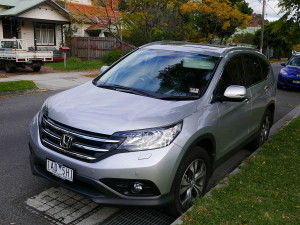 5.08: 2012-2016 Honda CR-V
5.08: 2012-2016 Honda CR-V
The current generation CR-V makes a strong showing with its SWR of 5.08. If you’re interested in the previous generation for savings, given the high resale value of the CR-V, keep in mind that while the 2007-11 model years do feature ESC and roll-sensitive side airbags, the roof is rated as “marginal” by the IIHS with a SWR of 2.80.
That said, the IIHS also estimated the ’08-’11 4WD and 2WD CR-Vs to have driver death rates of 17 and 19, respectively, with only 2 of those deaths in either configuration estimated to come from rollovers. This suggests that in day-to-day driving, at least, the CR-V was already a very safe vehicle in its prior generation, as well as one unlikely to lead to deaths from rollovers, despite its marginal roof score.
My full 3 across car seat guide to the various generations of the CR-V is here.
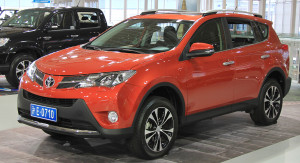 5.00: 2013-2016 Toyota RAV4
5.00: 2013-2016 Toyota RAV4
The last Toyota on the list, the RAV4 just makes the cutoff with an SWR of exactly 5.00. As with the CR-V, if you look to the prior generation for savings, keep in mind that while the RAV4 does feature roll-sensitive airbags from 2007-12 as well as ESC, the roof is only rated as “acceptable” by the IIHS with a 3.46 SWR.
That said, even though the SWR is better than that of the CR-V, the 2008-11 4WD and 2WD RAV4s have driver death rates of 19 and 35, with 2 and 10 deaths in the respective configurations estimated to result from rollovers. I’m not sure why the 2WD RAV4 had a much higher overall and rollover-specific death rate; it’s entirely possible that it could be due to statistical noise. However, it’s something to keep in mind.
My full 3 across car seat guide to the various generations of the RAV4 is here.
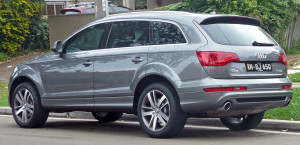 5.00: 2017 Audi Q7
5.00: 2017 Audi Q7
Finally, the current generation Q7 rounds out the list with a good SWR of 5.00, tied with the RAV4 but in a clearly different marketing segment. The Q7 is also the current leader in side impact protection resistance, which is another strong nod toward its comprehensive approach to safety. However, if you’re interested in saving money, you’ll need to take your chances with the previous generation (’07-’15) Q7, as it doesn’t feature a roof score, despite including ESC and roll-sensitive side airbags.
My full 3 across car seat guide to all generations of the Q7 is available here.
In conclusion, any of these SUVs and crossovers will be among the absolute safest you can be in during a rollover today. They feature ESC to reduce the risks of rollover involvement to begin with, rollover-sensitive side airbags to protect you should rollovers occur, and strong roofs to preserve your occupant space and allow your seat belts and side airbags to do their jobs while the rollover occurs. These are life-saving technologies, and we’re blessed to live in an era where they exist and are widely available and increasingly affordable.
What do I do if the SUV or crossover I bought or am considering wasn’t on the list?
Due to space constraints, I focused on only listing the best of the best small SUVs and crossovers currently available for rollover protection. This doesn’t mean that these are the only safe crossovers out there right now. Any crossover with a SWR of 4.0 or higher, ESC, and roll-sensitive side airbags is already going to provide a large amount of protection if you’re unfortunate enough to get into a rollover situation.
If you’re considering an SUV that doesn’t have the features above, you’ll want to make sure you’ve got ESC at an absolute minimum, followed by a strong roof, and roll-sensitive side airbags. If you have to choose between a strong roof and roll-sensitive airbags, I’d go with the roof score, presuming you have side airbags in both vehicles. However, ESC is by far the most important of the three technologies to have, as prevention is always better than having to deal with the cure, and avoiding a rollover is much better than having technology to increase your odds of surviving it once it’s already occurring.
We can’t control everything. The safest option is still not driving at all, followed by driving as little as possible. But if you’ve got to drive, drive safely, and do your best to choose a safe vehicle. If you’re going to use it with children, definitely check out the plethora of best practice articles I’ve written here on choosing safe car seats, installation tips, seat reviews, and more information to help you make informed decisions.
I loved writing this article, and I hope you enjoyed reading it. I look forward to writing more articles examining various factors in car safety design and how they relate to keeping you and your loved ones safer while on the road. Stay tuned, remember to avoid common mistakes parents make with car seats, and check out some 3 across car seat guides while you’re here.
If you find the information on car safety, recommended car seats, and car seat reviews on this car seat blog helpful, you can shop through this Amazon link for any purchases, car seat-related or not. Canadians can shop through this link for Canadian purchases.

